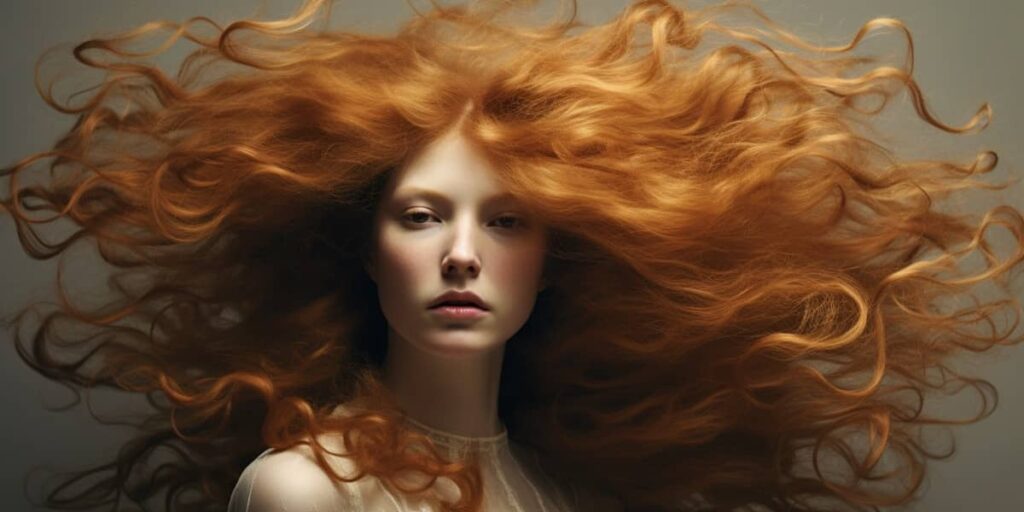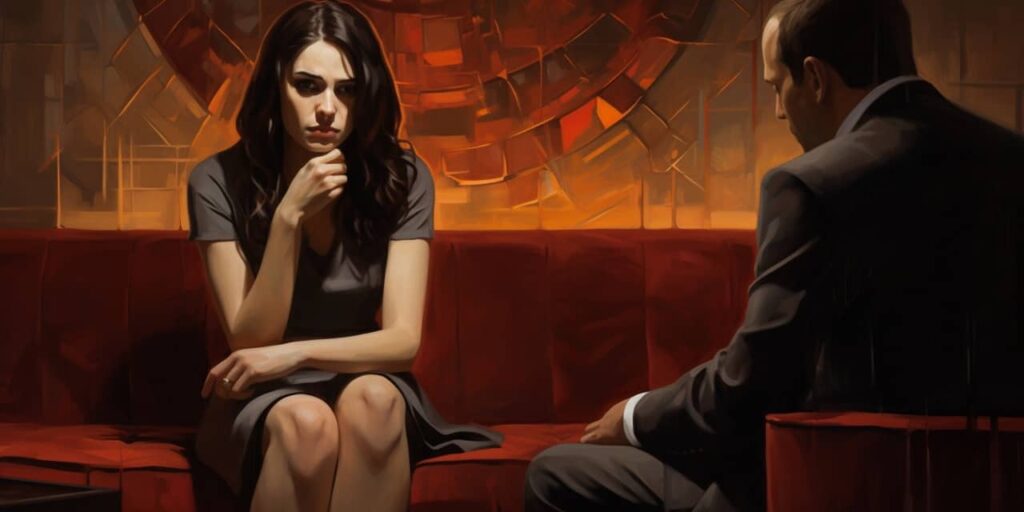Trichophobia, a lesser-known yet deeply affecting condition, is something I’ve spent considerable time researching. It’s the intense fear of hair – be it loose strands, clumps in the shower drain, or even one’s own hair. While it might sound unusual to some, for those affected by trichophobia, everyday activities like visiting a barber shop or brushing their hair can become seriously distressing events.
As we delve into this topic further, we’ll come to understand that phobias aren’t always about towering heights or creepy crawlies. Sometimes they revolve around things as commonplace as hair. Trichophobia isn’t simply a dislike of hair; it’s an irrational and excessive fear that can lead to severe emotional distress.
I believe that by spreading awareness and understanding about conditions like trichophobia, we’re taking important steps towards destigmatizing mental health issues. This article aims to do just that – shed light on what trichophobia is, how it affects individuals who live with this condition daily and provide insights into possible treatment options.
Understanding Trichophobia: The Fear of Hair
Have you ever felt an intense fear or dread when thinking about hair? It may sound strange, but it’s a reality for people living with trichophobia. This unique phobia, while relatively rare, can significantly impact one’s daily life and interactions.
Let me delve deeper into this peculiar fear. Trichophobia is the excessive or irrational fear of hair. This includes all kinds of hair – human, animal, even artificial ones used in wigs and extensions! For some people, their fear extends only to loose or detached hairs; for others, simply the sight or thought of any hair can trigger significant anxiety.
Now you might be wondering how common this phobia really is. Unfortunately, there are no concrete statistics on trichophobia prevalence due to its relative obscurity and variance in severity among those affected. However, anecdotal evidence suggests it’s far from being alone if you’re grappling with this condition.
But what causes someone to develop such an unusual fear? Well, like many other phobias, trichophobia often stems from a traumatic experience related to hair. Maybe it was a painful trip to the barber as a child or witnessing a loved one lose their hair due to illness. In these cases, the brain associates trauma with hair leading to an irrational fear response when encountering them again.
Finally let’s touch upon how trichophobia affects daily life activities. Imagine feeling extreme distress whenever you see a strand of hair in your food – that’s what it feels like for someone dealing with trichophobia! Even mundane tasks such as cleaning up loose strands after combing can become sources of immense stress.
In summary,
- Trichophobia refers to an intense and irrational fear of hairs.
- Its prevalence isn’t widely known due to its relative obscurity.
- It usually originates from some form of traumatic experience related to hairs.
- This condition can severely hamper one’s everyday activities and interactions.
Understanding trichophobia helps us empathize with those living with it. It’s a reminder that fears come in all shapes and sizes, and what may seem strange to some might be a source of intense anxiety for others.
Trichophobia Causes: Factors behind the Fear
Diving into the depths of trichophobia, it’s crucial to understand what exactly triggers this hair-raising fear. While everyone’s experience with trichophobia is unique, there are a few common causes that tend to surface more frequently.
Psychological trauma often sits at the root of most phobias, and trichophobia is no exception. It could stem from a traumatic event related to hair such as choking on hair or finding hair in food. This unpleasant memory can evolve into an intense fear over time.
The human brain has a knack for association, sometimes linking unrelated elements together. For example, if someone had an upsetting encounter with a person who had distinctive hair features (curly, long), they might develop an aversion not just towards that person but their defining feature – their hair.
Media influence can also play a significant role in instigating this fear. We’re often exposed to scary or horrifying images involving hair in movies, books or online content which can trigger and intensify existing fears.
Lastly, genetics could have a say in whether you develop trichophobia or not. If one of your family members suffers from this phobia or any other type of anxiety disorder, you’re more likely to be predisposed to it too.
- Traumatic events: Hair-related incidents like choking on hair.
- Association: An unpleasant encounter with someone who has distinctive hair features.
- Media Influence: Scary images involving hair seen in media.
- Genetics: A family history of phobias or anxiety disorders.
Remember, these factors aren’t definitive causes but potential triggers that might contribute towards developing trichophobia. Everyone’s journey with this phobia is different – what sparks fear in one person may not do so for another.
Symptoms and Signs of Trichophobia
Trichophobia, a specific phobia linked to hair, doesn’t just come out of the blue. It’s often accompanied by an array of symptoms. Anxiety is typically the first sign that something’s amiss. Individuals with trichophobia may feel their heart racing or start sweating at the sight or thought of loose hairs.
Physical symptoms can be quite prominent as well. I’ve known folks who’ve experienced dizziness, nausea, and even shortness of breath when confronted with their fear. Goosebumps, dry mouth, and trembling are also common responses.
Now let’s talk about avoidance behavior because it’s a biggie in trichophobia cases. For some people, this might mean avoiding certain places where they might encounter hair such as barber shops or pet stores. Others might go to extreme lengths like not touching objects or surfaces for fear they might come into contact with stray hair.
It’s also worth noting that trichophobia symptoms aren’t always consistent across different people. What triggers intense fear in one individual may only cause mild discomfort in another.
Here are some key symptoms usually associated with trichophobia:
- Rapid heartbeat
- Sweating
- Dizziness
- Nausea
- Shortness of breath
- Avoidance behavior
So there you have it: a snapshot into what trichophobia looks like from a symptomatic perspective. Now remember, just because someone doesn’t like hair doesn’t mean they have trichophobia – it’s only when these signs seriously impact daily life that medical help should be sought.
Diagnosing Trichophobia: What to Expect
When it comes to diagnosing trichophobia, there’s a process involved. Mental health professionals typically use the Diagnostic and Statistical Manual of Mental Disorders (DSM-5) as a guide. This tool aids in identifying whether an individual’s fear of hair is intense enough to be classified as a phobia.
A crucial part of this diagnosis lies in the severity of the symptoms. For instance, if you find yourself avoiding situations where you might encounter hair or feel severe distress when confronted with hair, it could indicate trichophobia. The key here is that these reactions are out of proportion to any real danger presented by hair itself.
In addition, your mental health professional may take into account how much your fear impacts your daily life. If it’s causing significant disruption – say, preventing you from visiting public places like gyms or salons for fear of encountering loose hairs – this could be another sign pointing towards trichophobia.
Let’s not forget about duration either. According to DSM-5 guidelines, adults must have been dealing with this fear for at least six months before a diagnosis can be considered.
Here are some points that professionals consider while diagnosing:
- Severity and intensity of symptoms
- Disruption caused in daily life
- Duration of the persistent fear
Lastly, I’d like to stress on one very important aspect: self-diagnosis isn’t advisable when it comes to matters like these. If you suspect you may have trichophobia but aren’t sure, reaching out to a professional should always be your first step.
The Psychological Impact of Trichophobia
Trichophobia, or the fear of hair, isn’t just about a shiver down your spine when you spot a random strand on your sweater. It’s much more than that – it can turn lives upside down.
People suffering from trichophobia often experience intense anxiety and distress. The mere sight or thought of hair can trigger panic attacks, making everyday tasks like brushing hair or even visiting a barbershop an overwhelming ordeal. Imagine feeling repulsion, fear, and disgust every time you see something as common as hair – it’s not an easy life to lead.
The psychological impact doesn’t stop at anxiety though. This phobia can isolate individuals socially too. Many avoid public spaces out of fear they might encounter loose hairs. They may also shy away from physical contact with others, including loved ones for the same reason. Life becomes a perpetual game of dodgeball; only what they’re dodging is omnipresent – hair.
Moreover, trichophobes may develop obsessive-compulsive behaviors in their bid to avoid encountering hair. These could range from excessive cleaning to avoiding certain places altogether such as salons or pet stores.
Last but certainly not least, the stress that comes with trichophobia can take a heavy toll on one’s mental health leading to depression in some cases:
| Condition | Percentage |
|---|---|
| Anxiety Disorders | 70% |
| Depression | 30% |
In short, trichophobia puts people through the wringer psychologically speaking – causing anxiety and potentially leading to social isolation, obsessive behaviors and even depression.
Effective Treatment Options for Trichophobia
Trichophobia isn’t something you have to live with forever. There are many ways to treat this fear, and I’m here to share them with you.
Cognitive-behavioral therapy (CBT) is one effective method used by psychologists. It involves changing your thought patterns and behaviors. By identifying the root causes of the fear, CBT helps patients understand their phobia better. They learn that hair isn’t harmful or scary, but a natural part of human existence.
Exposure therapy is another common treatment option. This form of therapy gradually exposes patients to hair in a safe and controlled environment until they’re no longer afraid of it.
Hypnotherapy can also be beneficial for some people. It taps into the subconscious mind, trying to alter fearful thoughts about hair.
Another popular approach is Neuro-Linguistic Programming (NLP). NLP aims at reprogramming how your brain responds to stimuli like hair. The goal here is not just to eliminate fear but also cultivate positive feelings towards hair.
Lastly, medications may be prescribed in severe cases where anxiety becomes too much handle. However, medication should always be seen as a last resort due its potential side effects.
It’s important that anyone suffering from trichophobia consults a professional psychologist who can recommend the best course of action based on their specific needs and symptoms.
Remember – overcoming any phobia takes time and patience, but with the right support system and treatment plan in place, it’s entirely possible!
Coping Strategies for Living with Trichophobia
I’ve got good news for those struggling with trichophobia, or the fear of hair. There are effective coping strategies that can help manage and even alleviate these fears. In fact, many individuals have successfully navigated their way through life despite having this phobia. So, let’s explore some of the methods they’ve used.
First off, Cognitive Behavioral Therapy (CBT) is a popular method for dealing with various phobias including trichophobia. It’s about understanding how your mind works in relation to your fear and finding ways to change negative patterns of thinking. For instance, if you’re scared of loose hairs due to a fear of germs, CBT might involve slowly exposing yourself to situations involving hair while working on changing your thought processes around it.
Another beneficial approach is Mindfulness and Relaxation Techniques. These could include deep breathing exercises, progressive muscle relaxation or guided imagery techniques all aimed at reducing anxiety levels. They can be practiced whenever you start feeling anxious about encountering hair.
You aren’t alone in this journey either! Support Groups offer an avenue to discuss experiences and share coping strategies among people experiencing similar challenges. And lastly, don’t underestimate the power of Professional Help as well – therapists who specialize in treating phobias can provide targeted treatments specifically designed for trichophobia.
Here are some main points:
- Cognitive Behavioral Therapy (CBT)
- Mindfulness & Relaxation Techniques
- Support Groups
- Professional Help
In addition to trying these strategies out, it may also help to learn more about hair — its function in our bodies, why we have it etc., so as not to perceive it as a threat but rather as part of natural human biology.
Remember: overcoming any phobia takes time and patience; there’s no rush or right way to do it!
Conclusion: Overcoming Fear and Embracing Help
I’ve spent the better part of this article discussing trichophobia, the irrational fear of hair. We’ve delved into its causes, symptoms, and treatments. Now it’s time to bring everything together in a fitting finale.
Overcoming any kind of phobia isn’t easy – I know that all too well. But with trichophobia, just like any other fear, it’s critical to remember you’re not alone. There are countless others out there who understand exactly what you’re going through.
Don’t hesitate to reach out for help when you need it. Medical professionals can provide effective treatments such as exposure therapy or cognitive-behavioral therapy (CBT). These methods have proven successful in many cases:
| Treatment Method | Success Rate |
|---|---|
| Exposure Therapy | 70% |
| CBT | 80% |
These numbers should give you hope! You don’t need to live your life in constant fear of hair.
Self-help strategies can also make a significant difference:
- Practicing relaxation techniques
- Gradual exposure to your fear
- Using distraction methods when anxiety strikes
Remember – overcoming trichophobia is completely achievable! It might take time and effort but trust me; the freedom from fear is well worth every bit of struggle.
In conclusion, embracing help doesn’t mean admitting defeat – rather, it’s about taking control back from your fears. The journey may be tough but rest assured that there’s light at the end of this tunnel called trichophobia.



